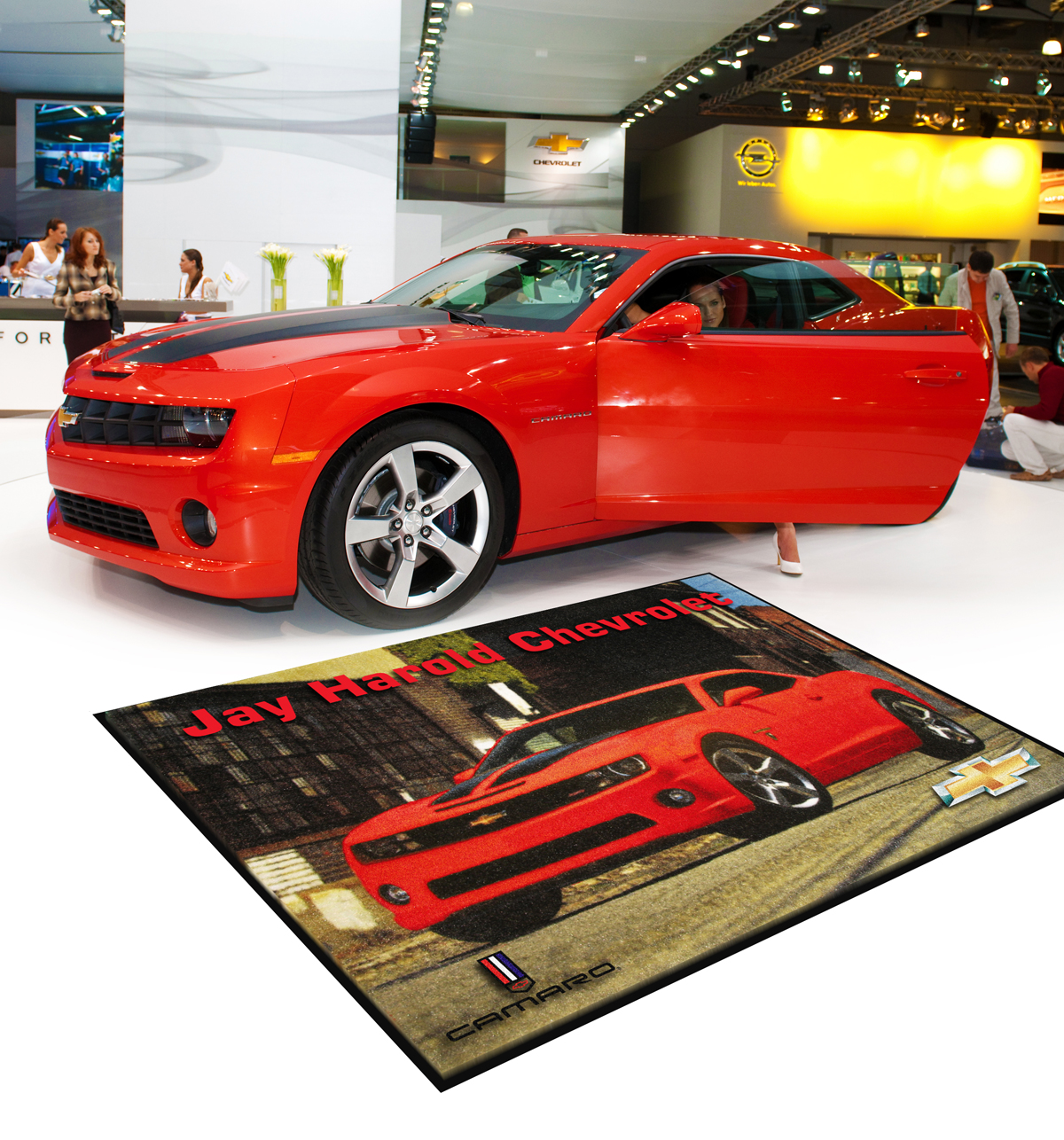
What Matters About Logos
Logos are more than just graphic symbols; they are the face of a company’s brand identity.
Understanding what makes a logo effective is crucial for businesses aiming to stand out in a crowded market.
In this article, you will learn:
- Critical elements of a successful logo design.
- The psychological impact of logos on consumer behavior.
- Best practices for redesigning or updating a logo.
As we delve deeper, you’ll discover how these components work together to create a memorable brand identity.
The Importance of Logo Design in Branding
A logo serves as the cornerstone of a brand’s visual identity, playing a pivotal role in how the public perceives the brand. It’s not just a random mark; it is the most recognizable symbol of the company’s brand. A well-designed logo establishes credibility and creates an instant connection with the audience.
Brand Recognition and Recall
The primary function of a logo is to foster brand recognition. Memorable logos become synonymous with the brand they represent, helping consumers to recall the brand easily. For instance, the Nike swoosh or the Apple apple are so iconic that they need no text to convey their brand’s identity. These logos are excellent examples of how a simple, memorable design can effectively represent a brand.
Consistency Across Media
A logo appears on every piece of marketing material – from business cards and advertisements to websites and packaging. A consistent logo design ensures that the brand is easily recognizable across various platforms, reinforcing the brand identity wherever it appears.
Conveying Brand Values
Logos also play a crucial role in conveying the essence of a brand’s values. For example, a logo with a rugged, bold font might be used by an outdoor gear company to communicate durability and adventure, while a luxury brand might use sleek, minimalist design to express elegance and sophistication. Other examples include the use of organic shapes and earthy colors to convey sustainability, or the use of playful fonts and bright colors to communicate a fun and youthful brand personality.
Establishing an Emotional Connection
Effective logos often establish a deep emotional connection with the audience. This emotional resonance can make the brand more endearing to consumers and foster brand loyalty. The right logo can evoke feelings of trust, joy, or reliability, aligning the brand’s perceived values with its target audience’s expectations, thereby making them feel more engaged and connected to the brand.
Key Elements of a Successful Logo
Creating a logo that is both impactful and enduring involves a blend of design skills, creative theory, and thoughtful application. Here are the essential elements that contribute to the success of a logo design:
Simplicity
A simple logo design allows for easy recognition and allows the logo to be versatile and memorable. Good logos feature something unique without being overdrawn. For instance, the McDonald’s golden arches are simple yet instantly recognizable around the world.
Memorability
Following closely on simplicity, a logo also needs to be memorable. An effective logo should be distinctive enough to be easily recalled by consumers. The simplicity of the design helps to ensure that it is easy to remember.
Versatility
An effective logo should be able to work across a variety of mediums and applications. The logo should be functional in different sizes — from a billboard to a pen — and should be legible in full color as well as black and white. This ensures that the logo can be used in all marketing materials without losing its identity.
Appropriateness
The logo should be appropriate for its intended purpose. For example, if you are designing a logo for a law firm, it is most likely more appropriate to use a conservative font and color scheme. This does not mean every logo for a law firm should be similar, but it should convey the right feel to its target audience.
Color Psychology
Color plays an important role in logo design as it can influence emotions and feelings. Understanding color psychology can help in choosing colors that align with the brand’s values. For example, blue can convey professionalism and trust, making it a popular choice in the corporate world. Similarly, the choice of font can also communicate different brand values. A bold, uppercase font might convey strength and authority, while a handwritten script might suggest creativity and personalization.
Typography
Typography is another significant element in logo design. The choice of typeface can tell a lot about a company — whether it’s modern, information-driven, or fun. The font should work together with other elements of the logo to promote the overall brand message.
Psychological Impact of Logos on Consumer Behavior
Logos are potent tools in creating a psychological impact on consumers. They not only help in identification of a brand but also influence perceptions and attitudes towards a brand. Understanding the psychological aspects of logo design can enhance how a logo communicates and resonates with the audience. For instance, a logo with warm colors like red and yellow can evoke feelings of excitement and energy, which might encourage consumers to engage with the brand.
Emotional Influence
A logo can evoke specific emotions in the audience, which can contribute to a consumer’s decision to engage with the brand. For instance, the use of warm colors like red and yellow in the McDonald’s logo is intended to evoke feelings of warmth and comfort, encouraging a connection with the brand.
Perception of Quality and Trust
Consumers often judge the quality and trustworthiness of a company based on its logo design. A well-designed, professional logo can lead consumers to perceive a brand as more reliable and high-quality. Conversely, a poorly designed logo might suggest a lack of professionalism and deter potential customers.
Brand Identity and Values
Logos symbolize a brand’s identity and communicate its values at a glance. Effective logos tell the story of a brand, embodying its personality and core principles. This can be critical in attracting like-minded customers who share similar values or aspire to a certain lifestyle associated with the brand.
Subconscious Appeals
Logos can also work at a subconscious level, where certain shapes and colors can influence consumer perceptions and behaviors without them being fully aware of it. For instance, circular shapes in logos can create a sense of unity and trust, while angular designs might evoke feelings of stability and efficiency.
Cultural Significance
The impact of a logo can vary significantly across different cultures, emphasizing the need for brands to consider cultural implications in their designs. Symbols, colors, and even the direction in which a logo is read can have different meanings in different cultures, affecting consumer perception and brand acceptance globally. For example, the color red might symbolize luck and prosperity in one culture, but danger and warning in another. Understanding these cultural nuances can help ensure that your logo is well-received and understood by your target audience.
Best Practices for Logo Creation and Redesign
When embarking on the journey of creating or redesigning a logo, there are several best practices that can guide the process to ensure the final product effectively represents the brand and resonates with the target audience. However, it’s also important to be aware of potential pitfalls or mistakes to avoid. For instance, using too many design elements can make a logo look cluttered and confusing, while choosing a font that is difficult to read can hinder brand recognition.
Understand Your Brand
Before diving into the design process, it’s crucial to have a deep understanding of your brand’s core values, target audience, and market positioning. This foundation will inform the design choices, ensuring that the logo accurately reflects the brand’s identity and appeals to the right demographic, thereby making the audience feel more confident in their logo design decisions.
Keep It Timeless
While it’s tempting to follow the latest design trends, logos should ideally be timeless. A logo that is too trendy can quickly become outdated. Focus on creating a design that will remain relevant and appealing over time, avoiding overly trendy elements that might not age well.
Engage a Professional
Although budget constraints might tempt businesses to cut corners on design expenses, investing in a professional designer or design agency can make a significant difference. Experienced designers can bring a level of sophistication to the logo that non-designers might struggle to achieve and can help avoid common pitfalls in the design process.
Feedback and Testing
Throughout the design process, gather feedback from a variety of sources, including stakeholders, potential customers, and professional peers. Testing different logo versions can provide valuable insights into how your logo is perceived and may perform in the real world.
Prepare for Multiple Use Cases
Ensure that the logo design is versatile enough to work across various media and scales. It should look good on everything from a website favicon to a large billboard. Providing a style guide, including variations for different contexts (like monochrome or vertical and horizontal versions), can help maintain consistency across all uses.
Plan for Evolution
Consider how the logo could evolve as the brand grows. While rebrands and redesigns can refresh a company’s image, frequent changes can confuse customers and dilute brand identity. Plan for a logo that can undergo minor adjustments without needing a complete overhaul.
Conclusion
In this exploration of what matters about logos, we’ve uncovered several crucial aspects that contribute to their effectiveness and impact. From the design elements that ensure a logo is memorable and versatile to the psychological influence logos have on consumer behavior, each factor plays a pivotal role in crafting a successful brand identity.
Thanks for reading.
David Chapman
